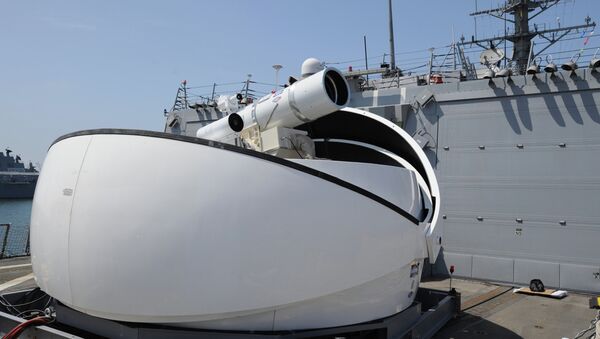WASHINGTON (Sputnik) — Directed energy technology for missile defense is reaching a decisive point for future applications, US Air Force Directed Energy Research Lab Chief Engineer Dr. Kelly Hammett said.
“There is a realization that directed energy technology is essentially at a tipping point,” Hammett said in a speech on the future of ballistic missile defense at the US Capitol on Tuesday.
Directed-energy weapons emit highly focused energy and transfer it to a target.
Hammett explained that developments over the past five years have led experts to conclude that directed energy weapons for missile defense “are feasible and achievable.”
In 2010, the US Department of Defense demonstrated the ability to kill a theatre class ballistic missile in its initial boost phase using a high-powered Airborne Laser (ABL) system.
The initial ABL program ran into numerous problems and limitations, which Hammett noted are being worked out in the current generation of technology under development at the Air Force Research Lab.
The program faced challenges in the survivability of the large platform — a modified 747 — the large chemical payload to fuel the laser, and the technological and scientific hurdle of overcoming atmospheric distortions while flying at transonic speeds.
To overcome the challenges, the Air Force Research Lab is working to compensate for aero-effects at supersonic flight speeds, and is shifting from chemical to solid state laser technology, to reduce weight and increase agility, Hammett explained.
“We have some collaboratively funded efforts to push the industrial base, to push the technology development, to scale these systems up in power to relevant tactical and then maybe in the more longer term strategic ranges of applicability,” Hammett said.
The directed energy program at the Air Force Research Lab currently receives only $150 million in funding, compared to the Missile Defense Agency’s budget of more than $6 billion.
The use of directed energy for missile defense has been envisioned since the latter part of the Cold War, but has yet to come into use on the battlefield.



